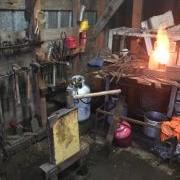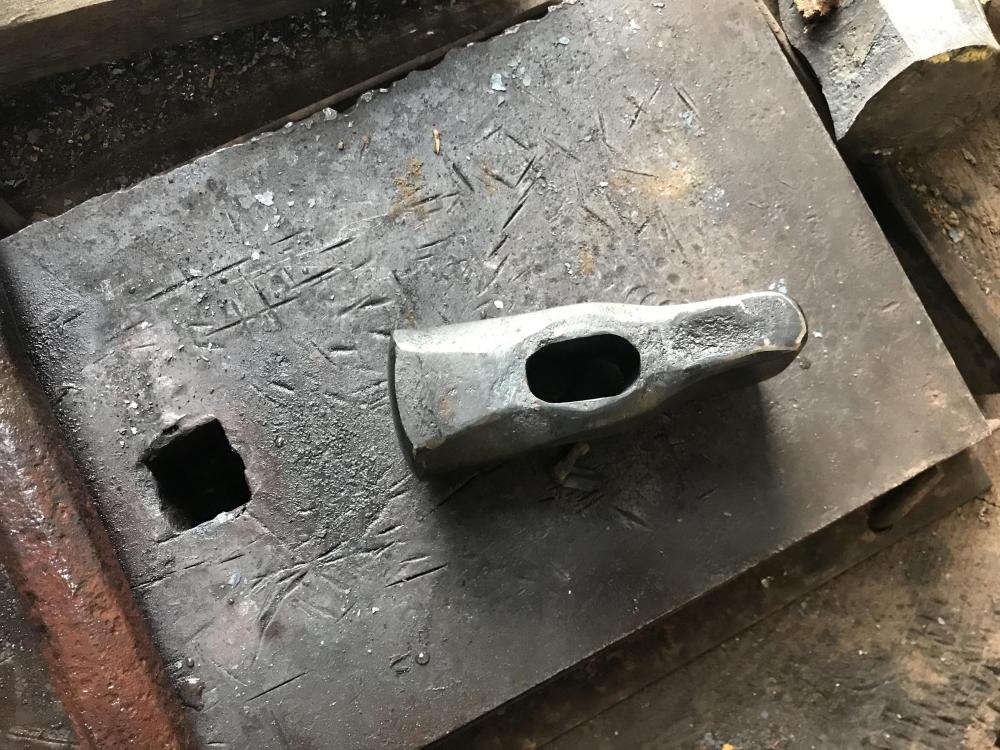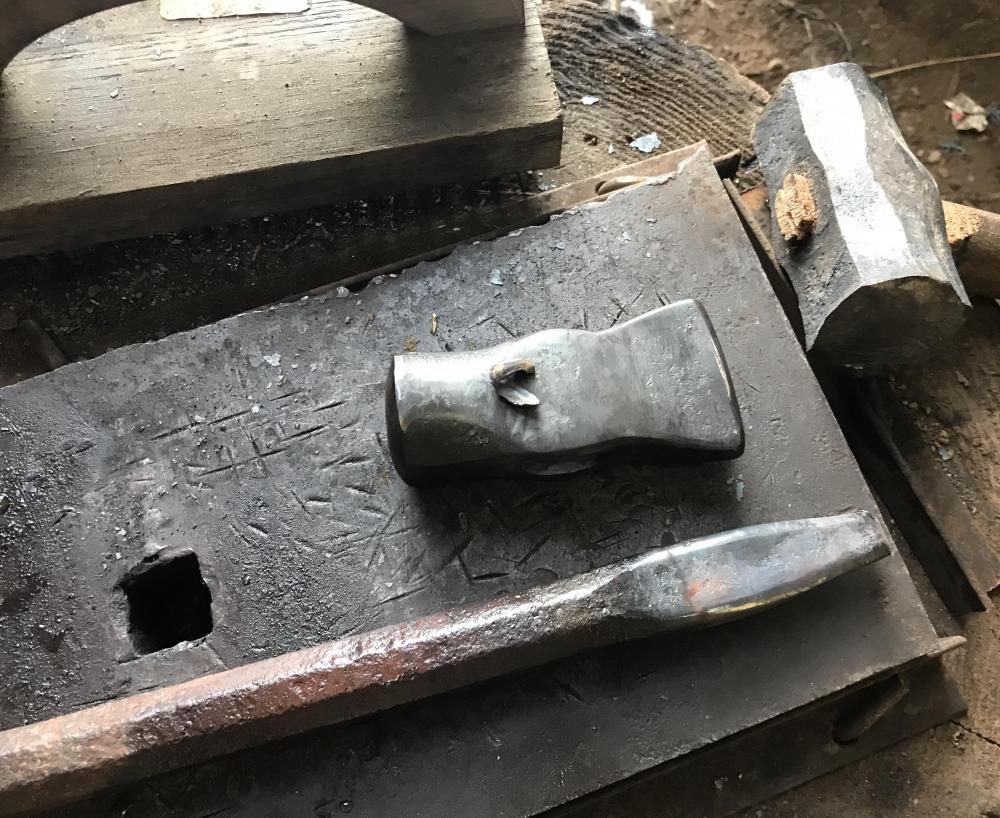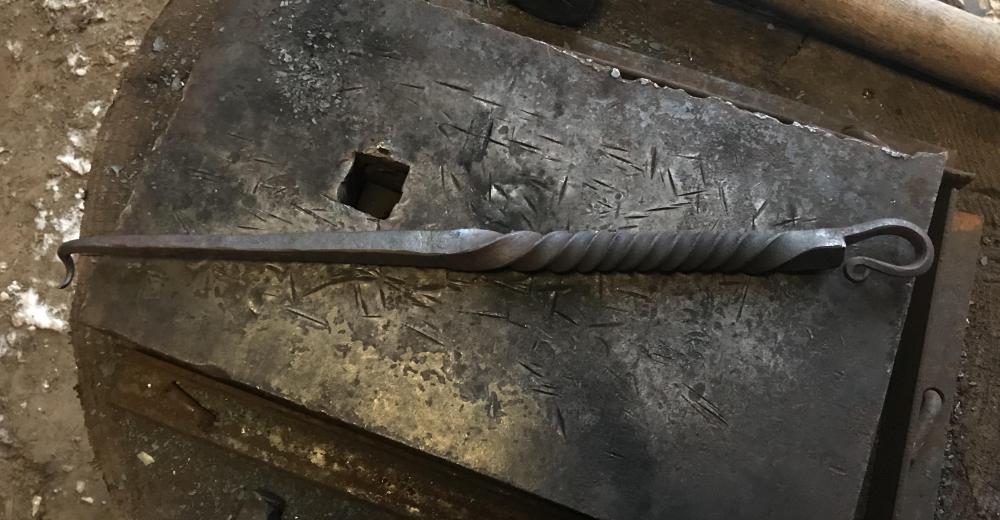-
Posts
954 -
Joined
-
Last visited
Content Type
Profiles
Forums
Articles
Gallery
Downloads
Events
Posts posted by Jasent
-
-
-
I haven’t plugged the holes permanently yet. Just stuck some chunks of 1/4” round in the holes for the test. I do believe your right about trimming the mig tip as it is a bit long/past center slightly. I’ll play with the tip and get it running a little more closer to neutral before I come back to the nozzles holes.
Thank you for your input.
-
I would agree.
-
Welcome. We’d love to see some of your work. We love pics!
-
1 hour ago, JHCC said:
My uncle used to rub it on his scalp to keep from going bald. It didn’t work.
 I’m surprised, been told I will put hair on your chest
I’m surprised, been told I will put hair on your chest 
,Bear oil does have many uses still applicable today: it makes an excellent leather conditioner, it can be substituted for lard in nearly any recipe especially for pastries, it makes a great lamp oil (smokeless), can be used as a lubricant for metal (including firearms), it can be used to make soaps, and it can be used to treat skin issues such as: dry skin, chapped skin and as a salve alone or as a base, and makes great pemmican!
-
Thank you cgl. Bear oil has many uses. Was used like money at one point. Not so common anymore. Thinking about bear makes me hungry for huckleberry pie. Only had a hour in the shop so I didn’t get to finish the hammer. Hopefully tomorrow I can get it done and start another using a different method
-
It was pretty quick, doing another today the same way. The bear oil works great. Season all my own stuff with it! Also makes the best hash browns
-
Thank you. I’ve got about 4’ of this steel left over. Going to put it to use
-
-
Thank you for clarifying. I’m liking this method, no worries about crooked eyes. I’ll give it a go tomorrow
-
Wow that was fast!
-
23 hours ago, jlpservicesinc said:
Making a hammer is a basic skill set..
One does not need a drift, special punch, or the like.. One does not even need special tongs22 hours ago, jlpservicesinc said:Jasent.. You don't even need anything other than a round punch.. Again, just basic equipment, forge, anvil, hammer.. Oh and a round punch.
16 hours ago, jlpservicesinc said:Now take another even heat on this area and insert the next size up in punch.. and punch again.. this time 3 or 4 whacks and the harder you hit it the fast it will drive through and get larger..
16 hours ago, jlpservicesinc said:once you get up to the largest size.. Now is the time you need to decide how large you want the eye to be..
I’m a bit confused. You started with saying you just need one round punch but then say you need multiple sizes of round punch?
How many round punches do you use and what increments do you step up to
i do like the idea of keeping it round then squishing it to oval as that negates the chances of having a crooked eye
-
Lol that’s a typo. 18 after plugging 3.
I will trim a little bit at a time till it neutrals out.
I dout co can build up in my shop with 3 walls but why chance it.
Flame is more blue in person but the camera always changes the color
For some reason you can’t even see all the flames in the pic
-
14 minutes ago, jlpservicesinc said:
Jasent.. You don't even need anything other than a round punch.. Again, just basic equipment, forge, anvil, hammer.. Oh and a round punch.
Punching is one the first skill sets taught..The op has never even heated a peace of steel.
A class is a good recommendation.
I make my hammers exactly as you describe except I like oval and not round
-
Sure you don’t need a drift. You can punch the eye to the shape you want. You don’t need special tongs just ones appropriate for the stock your using. No need to do anything to the cheeks. Also you can forge the round face or grind it.
But as you said the “ Brian “ rounding hammer is popular and the majority of new Smith’s that plan to make hammers have that very design in mind. And why not, they are beautiful hammers.
Personally I’ve never made that style but I would like one.
I agree that punching a hole is a very basic skill no matter the stock.
I just imagine a large chunk of steel with a punch permanently upset in it if it was the very first project.
There is some skills required to be learned before attempting to punch a hole in large stock.
Jmo based off my limited experience
jlp i re read your post and some how misunderstood it as saying it was a good first project. Now I see you where basically saying the same thing as I.
-
I would agree that making a hammer should not be a first project. First you need punches and proper tongs, drift, hardy tools, etc.
once you've made all the tools you’ll need you should have enough experience to accept your failures, and learn from them.
I think my first hammer was a 10oz cross peen. Tiny little thing but I learned a lot. Was probably my 10th project (just a guess with out visiting the thread to check).
My first hammer I used was a framing hammer that I ground smooth. It worked fine till I got better options.
-
Personally I really enjoy making hammers solo. It really isn’t that difficult. Once you figure it out it’s not much different from punching a hole in any thing and then drift it to proper shape and size. Then from there it’s up to you how you finish it. I’m no expert by any means. But I do have drive and a lack of help.
-
I’ll second that!
-
Looked like a great time Jennifer. Well done
-
-
My biggest fear is my wife to be will sell all my tools and guns for what I told her they cost

Making a list is a good idea!
congrats TP.
-
I’ll test it tonight. I know it has a high smoke point so temp will probably need raised
-
What about coconut oil?
-
I have never used BLO on anything that touches food. Just recently started using it on decorative stuff. Before that I just used canola oil on everything
i do have some bear oil I should try. It’s great for cooking!






It followed me home
in Blacksmithing, General Discussion
Posted
I like to stamp both sides in case I cut a peace off